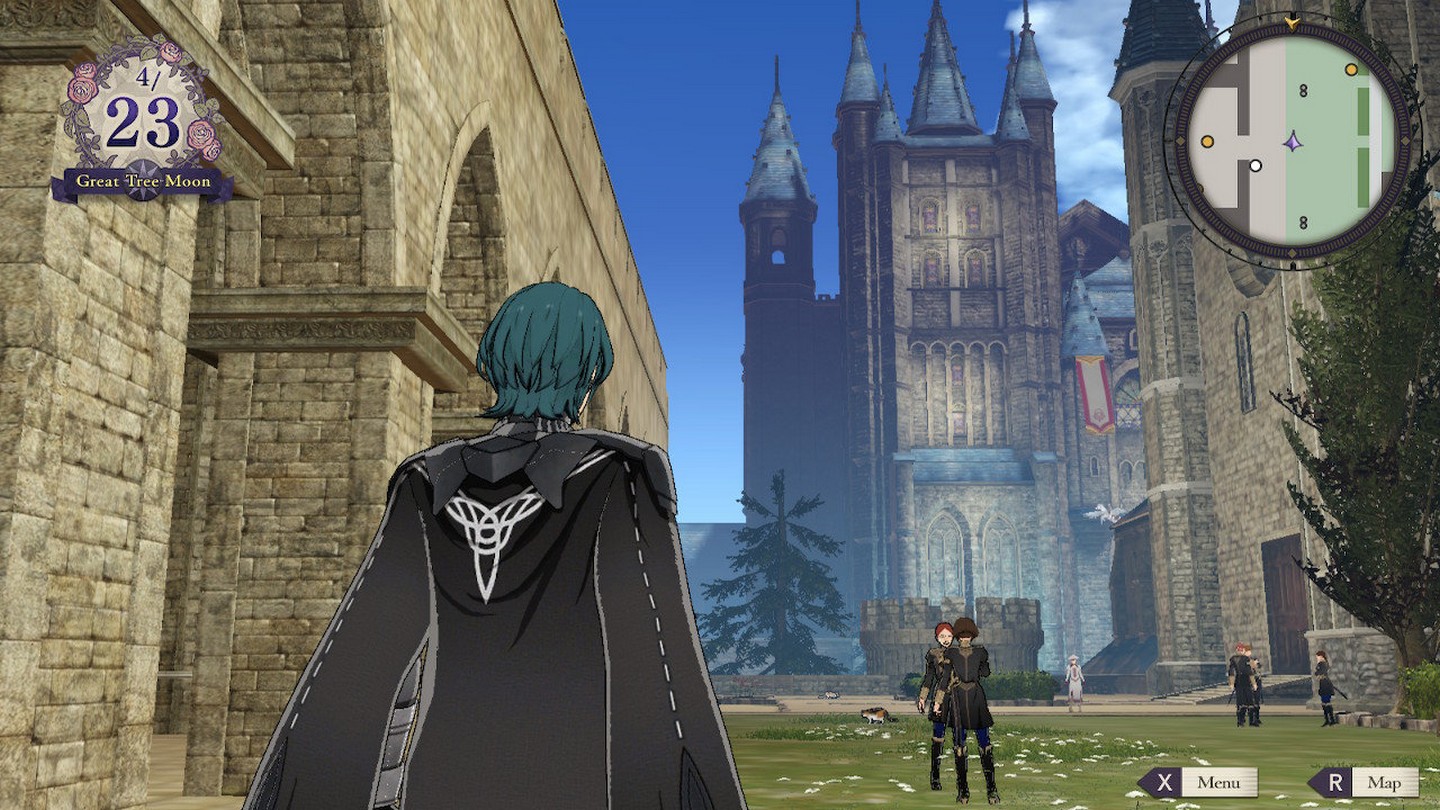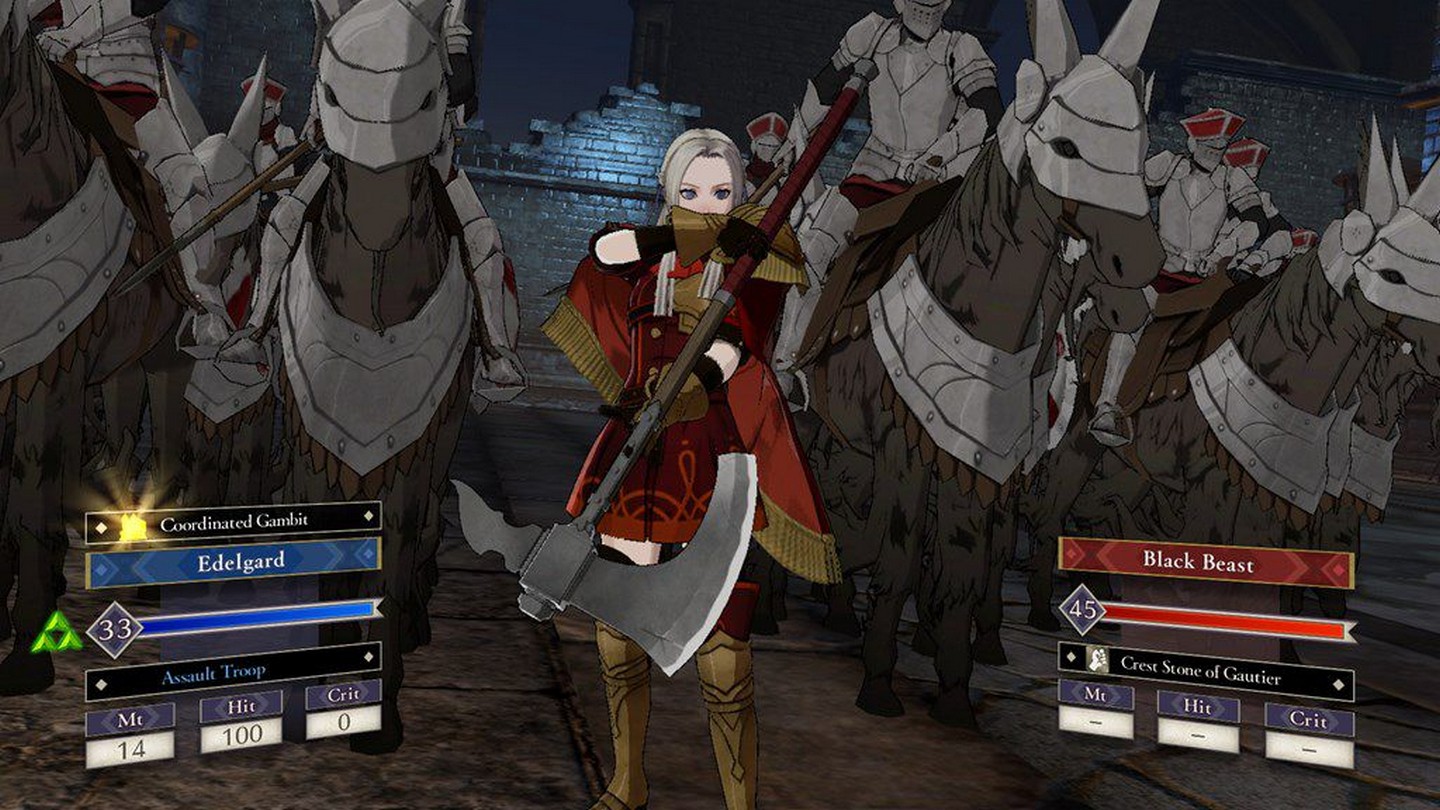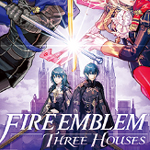Fire Emblem for a new generation.
As a series that first made its debut back in 1990, it took an additional 13 years to make its way to the States with the moniker, “Fire Emblem”. Despite critical acclaim and a loyal following of fans developing in the west, the series never truly took off and was on the verge of being relegated to obscurity until the release of Fire Emblem: Awakenings on the 3DS took the franchise to a new level of relevance and popularity.
Since then, the series has become one of the flagship titles for Nintendo, and even though I enjoyed the 3DS offerings for the series (minus Fates), I wanted a new entry to the series on a proper home console.
So, when Fire Emblem: Three Houses was announced for the Switch, I was absolutely thrilled at the prospect of playing a new Fire Emblem game on the big TV.

Is it an academy or a monastery? Why not both?
MSRP: $59.99
Platform: Switch
Length: 45~ hours
After a chance encounter with students of Garreg Mach Monastery, Byleth is thrust into being the newest professor in the prestigious academy where the future leaders of Fódlan have gathered together to learn and grow not just as individuals but as a group.
Taking charge of one of three distinct houses, Byleth and his/her students embark on eventful year of curriculum, blissfully unaware that their actions will shape the future of Fódlan itself .
Contrary to the high stakes, war campaign nature of previous FE titles, Three Houses focuses mostly on the school life of students who are still in the process of finding themselves. It’s a much more laid back tale initially, and despite the slow build up of intrigue and many skirmishes, it’s not until about half way through the story that things escalate.
Due to this fact, I think it would be fair to say that the pacing of the game is a bit on the slow side, but personally I enjoyed the calm before the storm as it allowed me to get familiar with the large monastery and the various students and staff that lived there.
Having a base of operations not only served to ground me to the world, it was also fun to explore with numerous facilities like a garden where I could grow plants or a pond where I could fish to my heart’s content as long as I had some bait. Talking to the students and getting their take on recent events, discovering lost items and returning them to their proper owners and just inviting people to eat their favorite meals all served to raise their morale as well as their affinity points to me which would open up support conversations.
For the first time ever, every single text of dialogue in the game is fully voice acted. The voice acting itself is excellent across the board, and add to that the fact that the support events are now fully animated instead of having just portraits emoting at each other, the presentation found in Three Houses is undoubtedly the best the series has to offer to date.
Unfortunately, the pretty graphics took a toll on the Switch hardware and I noticed frequent slowdowns when I was running around the monastery, but it didn’t affect my enjoyment of exploration too much.

Full voice acting makes my heart sing.
Thanks to the stellar efforts of the talented voice actors, I warmed up to this huge roster of characters very quickly and came away liking basically everyone for different reasons. From Bernedetta’s panic at having to leave her room to Sylvain’s endless womanizing, I never felt bored watching the interactions of this colorful cast of characters.
Given that this is a place of learning, planning the curriculum to increase the skill ratings of the students so they can excel on the battlefield played a major role, as there were weekly lessons where I had to set goals for them to try and achieve. Focusing builds based on their native proficiency was a smart approach. Looking ahead to the various classes they could upgrade into, I was able to generally able to work them towards being valuable units on the battlefield.
While on the battlefield, much of it seemed familiar to me as a veteran of the series except the rock-paper-scissors nature of sword, lance and axe was absent once more. Fliers being weak to bows still remained and there were skills that allowed me to do bonus damage based on the weapon type of the enemy, but the system remained quite flexible.
As a SRPG, the battle took place on a grid where I could move my characters around with certainly terrains having special effects like increasing my evasion or sometimes just damaging me for a percentage of my life. For the first time, with a press of a single button, I could go into a third person view of the battlefield, but even though this was a neat inclusion I didn’t find it particularly useful outside of being able to see the character models close up. As for more meaningful additions, I was able to turn back time if I deemed that shit had hit the fan, and even though there was a limited amount of time I was able to do this per map, I found this to be game changing in a way where RNG no longer played a life or death role.
After all, I have nightmare stories from previous Fire Emblem games where 30 minutes into a map, one of my favorite units was killed instantly off a 5% critical chance forcing me to start the whole map again.
As a wise woman once said, “AIN’T NOBODY GOT TIME FOR THAT!”
Now I could simply wind back the clock a few turns and place that unit in a more secure location to avoid disaster. This also had the benefit of making enemy ambushes where a bunch of enemies spawn right on top of my units feel a bit less unfair. Even though I can understand purists dreading this addition, the RNG nature of the game makes this a welcome addition to my eyes.
Another new inclusion is the battalion, which could be deployed with every character given they have the proper authority rank to command them. On top of increasing various stats, they also allowed for powerful gambits which had a variety of effects ranging from large AoE damage/healing to increasing the movement of units in a certain radius. Finding the perfect battalion to fit the right unit took some experimentation, and once I found some good synergy, they felt essential in growing my units to become absolute monsters.
On that note, as I played through the game in normal+classic mode, I sincerely regretted not going for a hard mode right off the bat as the encounters became too easy, with only a handful of them requiring any real thought or planning. Luckily, Three Houses has a wealth of content with multiple different routes and endings, and in my New Game+ file I have chosen to go with Hard+Classic, hoping for a more enjoyable challenge.

To my side my noble einherjar!
Fire Emblem: Three Houses stands tall as a true step forward for the franchise both in terms of presentation and gameplay, which I am certain will propel the series to yet another level of relevancy and popularity.
Fun Tidbit – My first playthrough was with the Black Eagles but now I’m on New Game + with the Golden Deer. I will be playing through the final route once I’m done with that!

YOU EXPECTED DIMITRI BUT IT WAS I, DIO!
Review copy of game provided by publisher.

